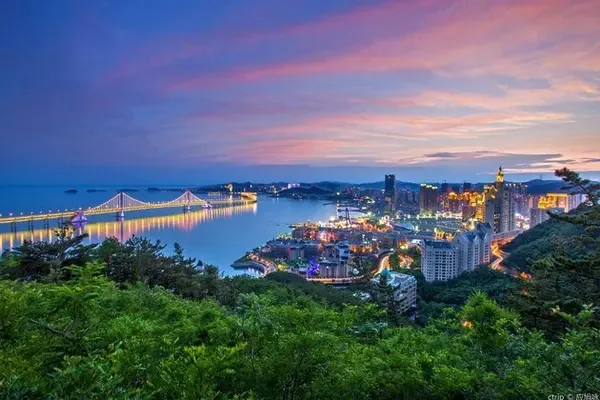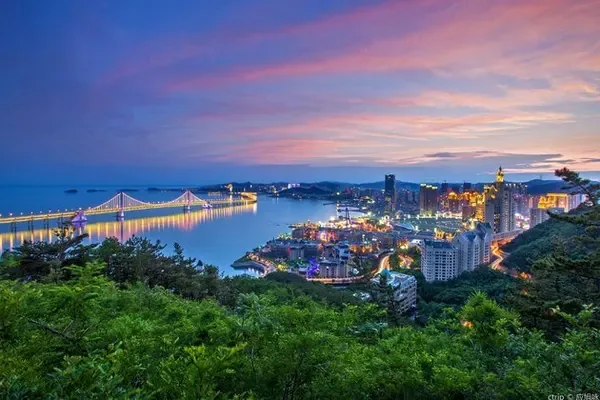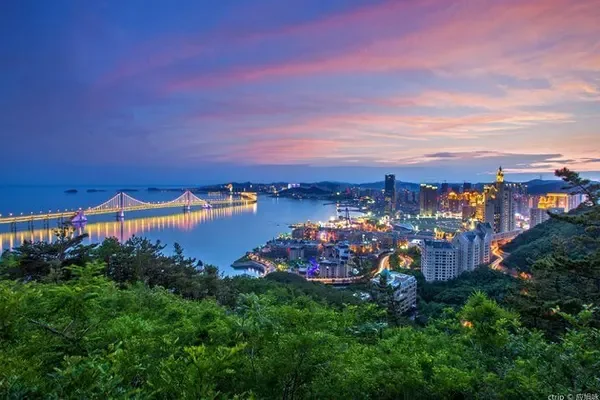Baiyangdian in Hebei is located not far southwest of Beijing, the largest freshwater lake and tourist attraction on the North China Plain. The reporter has been here many times in the past few years. If the latest trip is included, the reporter has been here at least five times. Even with this recent trip to Baiyangdian, eight years have passed in the blink of an eye. However, although the one-day trip to Baiyangdian was short-lived, the memory is still fresh.
It was July 25, 2014. The reporter and his party went to Baiyangdian to carry out an activity with the theme: "Pursuing the Footsteps of Anti-Japanese Heroes and Accepting Red Traditional Education". In order to avoid the relatively large number of tourists in open tourist attractions, we specially invited Si Zhenbo, the general manager of Beijing Times Longxiang Cultural Center, a friend whose hometown is near Baiyangdian, to be our guide for this event. At 7 o'clock in the morning, we assembled at the Xihongmen Tollgate of the Beijing-Kaikai Expressway and drove off.
There were few vehicles on the Daguang Expressway in the early morning, and our two cars were driving on the road at a constant speed. On the way, there were pleasant exchanges between everyone on the intercom from time to time. After about an hour and a half of travel, we successfully arrived at the Xidawu Wharf beside Baiyangdian Lake in Renqiu City. Eight people boarded two small wooden boats and went boating toward the depths of Baiyangdian Lake.
Baiyang Lake is under the jurisdiction of Anxin, Xiongxian, Rongcheng, Gaoyang, and Renqiu in Cangzhou City, Baoding City, Hebei Province. 85% of the waters are in Anxin County, Baoding City. Among the many lakes, Baiyangdian is the largest, so it is called "Baiyangdian". Since ancient times, Baiyangdian has been known as the "Pearl of North China" and "West Lake in the North", and now it is a nationally famous 5A-level scenic spot.
The people of Baiyangdian have a glorious revolutionary tradition. During the Anti-Japanese War, this was the place where the story of Xiaobing Zhang Ga took place. In particular, the water guerrilla "Yan Ling Squad" established by the people in the Baiyangdian area used rivers, lakes and harbor forks to carry out guerrilla warfare and shocked the enemy. They played hide-and-seek with the Japanese invading army in the reed maze and lotus pond, and often beat the invading army to death. , making the Japanese devils frightened. From this, the "Hehuadian School" of Chinese literature represented by Sun Li was born.
As our boat gradually entered the depths of Baiyangdian Lake, the beautiful lake light of Baiyangdian Lake gradually revealed her beautiful appearance. Baiyangdian Lake is a typical northern wetland, known for its rich products since ancient times. It is a kingdom of birds, a paradise of fish, and a museum of various aquatic plants. In midsummer, every reed is bright green from the stalk to the leaf, and the green is shining; in August, the lotus flowers in Baiyangdian are in full bloom. picturesque.
Our boat first came to a place called Xiaoyu Island. After landing, follow the embankment to a lotus pond. The lotus in Baiyangdian is one of its important scenery. Although the lotus pond on Xiaoyu Island is not large, it also shows the lotus in Baiyangdian from one side. Watching the scenery of the blooming lotus pond, the beautiful melody of "Moonlight in the Lotus Pond" sung by Phoenix Legend suddenly came to people's ears. In this situation and the scene, the pleasant feeling of viewing flowers, enjoying the scenery and listening to music is just right and pleasing to the eye.
According to Mr. Si, there are as many as 366 species of lotus in Baiyangdian, in various shapes and colors. It is the place with the largest variety of lotus in the north and even in the whole country. And the reeds in Baiyangdian are as many as 150,000 mu, and you can't see the edge at a glance. Looking from any angle on the water, the stretches of reeds look like a green Great Wall. She not only constitutes another unique landscape of Baiyangdian, but also gave the ghosts to the ghosts during the Anti-Japanese War. Team, provides effective natural protection. Not only that, but it is now the largest source of economic income for Baiyangdian.
Xiaoyu Island is small in size, but the elegant environment on the island is not bad. There is a commemorative stone of the "Caiputai Battle" here, which records a guerrilla war against the Japanese invaders that took place in Caiputai Village, Baiyangdian on the seventh day of the lunar calendar in 1942.
In addition, there are some real objects or models of mines (floating on the water), anti-war ships (lifting poles) and other objects that fought against the Japanese invaders on the island.
At the far end of the island, there is also a relatively crude gun tower and the figures of militia fighters and Zhang Ga, a small soldier. Although these bits and pieces are not much in content, they show people from an angle the unforgettable historical style of Baiyangdian's struggle against the Japanese invaders.
In the quiet environment of Xiaoyu Island, everyone held a serious democratic life meeting here. Around the theme of this trip, party activists and party members communicated freely with each other. Looking back and understanding the exciting stories of the Anti-Japanese War and the natural customs here, everyone felt that they had received a rare red traditional education.
The beautiful nature and the harmonious atmosphere are integrated, and life will be vigorous. It is generally believed that the activities carried out in Baiyangdian this time are very meaningful.
It was almost noon after the theme activity ended, and everyone sailed away from Xiaoyu Island to Anxin County by boat. After dozens of minutes of waterway, the boat arrived at Quantou Village in Anxin County, about 45 kilometers east of Baoding City, Hebei Province. Landing on the lakeside pier. Quantou Township is located in the center of Baiyangdian District, surrounded by water, with 29 large and small lakes.
Jurisdiction over Quantou East Street, Quantou West Street, Quantou Bridge South, Quantou Bridge, Dongguang Lake, Shaozhuangzi, Caiputai, Datianzhuang, Dongtianzhuang, Beitianzhuang 11 village committees. Sea reed weaving is the mainstay here, and aquaculture and fishing industries are also well developed. I think that many emperors visited here in the past, and Emperor Qianlong of the Qing Dynasty came here to surround and build a palace.
Walking in the small village, the narrow streets and alleys criss-cross, like a maze, and there are many old gates and old courtyards. Of course, there are not a few newly built houses by the villagers. The tall gate towers and the screen walls depicting dragons and phoenixes in the courtyard all reflect the well-off life of farmers here. Walk through the streets and alleys to a supply and marketing restaurant in the village. This is where we had lunch in Baiyangdian that day.
Walking into this restaurant with a fairly ordinary appearance, I never expected to taste a meal made of river prawns, loach, sweet and sour fish slices, fish scale powder, stewed miscellaneous fish, fungus fish fillets, crisp fish fillets, fried lotus leaves, It is a famous local farm dish composed of screw garlic sprouts, staple food such as shrimp paste cake and screw twist.
Boatmen on Baiyangdian Lake (photographed by Feng Ganyong)
Speaking of the food culture of Baiyangdian, it is quite amazing. Baiyangdian is a famous land of fish and rice. It is rich in all kinds of fish, shrimps, crabs and turtles. The recipes are also ever-changing. One of the "stewed miscellaneous fish" dishes is famous all over the country. In fact, it was just a short-term snack for fishermen in the past. The famous lotus banquet is also made of lotus flowers; the whole fish banquet is a masterpiece of Baiyangdian's fish collection; especially the delicious fish soup is so fresh that people will regret it for a lifetime. There are too many small fish to enumerate.
In addition, it is worth mentioning that the local specialty preserved egg with tea pattern, also known as preserved egg, is one of the famous special products of Baiyangdian. The egg source is eggs from free-range ducks, which are made with traditional techniques and new scientific formulas. The main characteristics of Baiyangdian preserved egg with tea pattern are bright color, delicious taste and clear tea pattern. After cutting, the pine flower is in four circles of dark green, black, light brown and dark brown. It can be used as cold salad, tofu pine flower, pine flower porridge and other dishes.
The sumptuous lunch at the supply and marketing restaurant at noon, although it is impossible to catch all the special delicacies of Baiyangdian, but the representative several elite dishes and delicacies in Baiyangdian have opened your eyes and refreshed your eyes, and you can appreciate and enjoy it personally. Taste enough, leaving a wonderful aftertaste that is unforgettable for life.
After lunch, go back to the pier and board a boat again on the lake. The boat cruises to an open water area, and those who know how to swim jump into the water for a swim. In summer, the water temperature in Dianzhong is neither too cold nor too hot, which is especially suitable for playing in the water. Mr. Si said that almost none of the children who grew up in Baiyangdian can't swim.
Nature is the best teacher. These children, who have never received any normal teaching and training, play in the water and play with ease. It is this unique natural water area that makes Baiyangdian famous all over the world. The day passed quickly with ease and joy, but what remained were good memories.
Regarding this place less than 200 kilometers away from Beijing, the reporter believes that anyone who has been to this place may more or less feel that this place is indeed a place that makes people linger and forget to return. (Photo: Feng Ganyong)



